Exclusive Neuroject Article: The term “Industrial Internet of Things” (IoT) refers to the gathering and processing of data with the aid of machine-to-machine (M2M) interactions, in which a machine interacts with other machines, objects, and infrastructures to generate data for the necessary operation. Massive amounts of data are produced, which are then processed and analyzed using tools like artificial intelligence and data analytics to produce actionable insights. Additionally, it makes use of intelligent actuators and sensors to improve production and provide real-time data analysis.
Industries can make choices more quickly and correctly by integrating IIoT to get a more accurate picture of how their operations are progressing. To enable production process analytics, control, and equipment monitoring and maintenance, IIoT entails gathering and processing sensor-generated data. The size of the Industrial Internet of Things (IIoT) market worldwide was anticipated to be USD 320.9 billion in 2022 and is projected to grow at a compound annual growth rate (CAGR) of 17.2% from 2024 to 2032, to reach approximately USD 1,562.35 billion.
Numerous industries, including manufacturing, logistics, mining, oil and gas, transportation, aviation, energy, and more, employ IIoT. Its main goal is to optimize operations, especially maintenance and process automation. IIoT capabilities improve maintenance management and asset performance. Over time, it shifts the sector toward a demand service model, fosters closer relationships with customers, and generates new sources of income, all of which support the digital transformation of sectors of the economy.
Table of Contents
What is the Industrial Internet of Things (IIoT)?
The collection of sensors, instruments, and independent devices linked to industrial applications over the Internet is known as the Industrial Internet of Things or IIoT. Through the collection of data, analysis, and production optimization made possible by this network, manufacturing and service costs can be decreased and efficiency raised. Industrial applications are entire technical ecosystems that link machinery to operators of assembly lines, large-scale distribution, and logistics.
The manufacturing, transportation, and energy sectors account for the majority of IIoT applications already in use; global investments in these sectors exceeded $300 billion in 2019 and are projected to treble by 2025. Predictive maintenance systems, warehouse and transport control systems, cobots, and other industrial robots are anticipated to become increasingly common shortly as a result of the IIoT’s adoption. IIoT is typically employed to enhance:
- Quality Control
- Sustainability Practices
- Supply Chain Tracking and Efficiency
- Predictive Maintenance
- Energy Management
- Asset Tracking
How does IIoT Work?
Machine-to-machine (M2M) communication, which is the fundamental mechanism by which the Industrial Internet of Things functions, is the act of linking industrial assets to the digital ecosystem. Simple manufacturing lines and sensors to intricate smart networks that control energy management are examples of assets. These internet-connected gadgets use embedded sensors to gather vital data. Subsequently, the data is transferred via cloud computing to real-time analytic software programs. The final aim? is to locate inefficiencies, anticipate problems before they arise (predictive maintenance), and formulate the best possible business choices.
The gathered data is analyzed and “understood” in the context of intricate industrial processes using artificial intelligence and sophisticated analytics. This procedure makes it possible to solve problems right away and develop predictive tactics that significantly lower expenses and raise customer satisfaction.
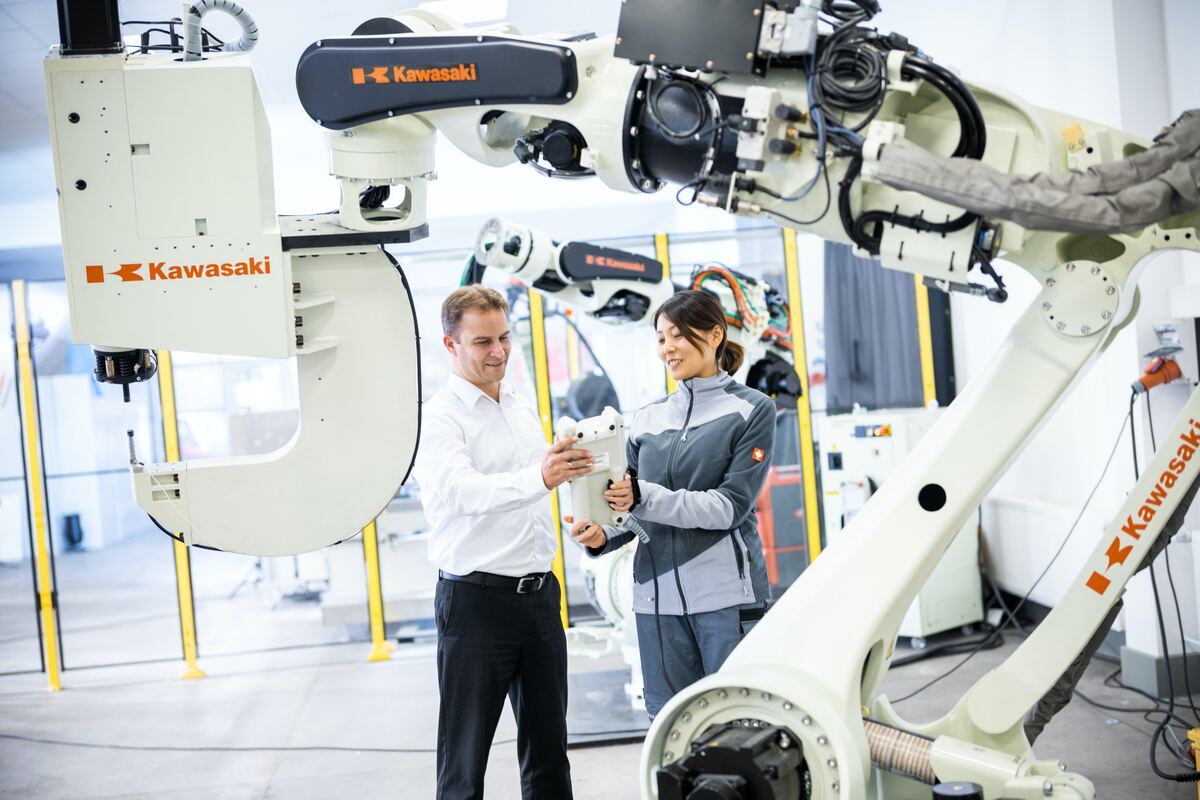
Industrial Internet of Things Examples
Industrial Internet of Things applications are more common and frequently closer to home than one might imagine, despite the concept’s abstract appearance. A taste of the industry-changing potential of Industrial Internet of Things can be found in the following examples:
- Manufacturing: In the manufacturing sector, IIoT is revolutionizing the game. Manufacturers can maintain inventories, keep an eye on the condition of their equipment, and optimize manufacturing processes by using internet-connected sensors. An assembly line with Internet of Things capabilities, for instance, might notify management immediately when a part needs to be replaced.
The industrial sectors are currently where Industrial Internet of Things technology is most prevalent. Smart devices with IioT capabilities can self-monitor and predict possible production bottlenecks. The results of this include increased productivity and less downtime.
- Automotive: The automobile industry is changing as a result of IioT, with linked cars offering real-time diagnostics and smart auto plants applying predictive maintenance. By monitoring vehicle performance and warning drivers of possible problems, the Industrial Internet of Things contributes to the improvement of safety measures.
- Energy Management: The IioT is essential to the current energy infrastructure. Utilities can use it to effectively manage energy distribution, forecast demand, and keep an eye on energy usage. Smart grids, for instance, employ IioT to track and manage the production and distribution of electricity in real-time.
- Agriculture: Smart farming practices use internet-connected equipment to track weather patterns, crop health, and soil conditions. Based on real-time data, farmers may use IioT to make informed decisions about when to apply fertilizer, when to irrigate crops, and when to harvest.
- Healthcare: IioT is utilized in healthcare for equipment tracking, remote patient monitoring, and medical device predictive maintenance. Healthcare practitioners can give more individualized treatment regimens and anticipate future health issues before they worsen by collecting and evaluating patient data in real-time.
The use of smart devices in healthcare has been going on for a while. Healthcare professionals can remotely monitor patients and are notified of any changes in their condition. This enhances healthcare’s precision and personalization. In the future, artificial intelligence may be able to assist in diagnosis, enabling medical personnel to treat patients more successfully and precisely.
- Supply Chain and Logistics: Industrial Internet of Things facilitates real-time freight tracking, cargo condition monitoring, and delivery route optimization. This degree of transparency raises total supply chain efficiency, lowers costs, and increases customer happiness.
While keeping production levels constant is important, a smooth supply chain delivery system is also essential. Thanks to IioT, orders may automatically replenish inventory as needed. This reduces waste, maintains stock levels, and ensures that the right amount of raw materials is always available. Automation in the ordering and supply chain procedures allows workers to focus on more complex areas of their jobs.
- Retail: Retailers can make quick, store-specific marketing decisions thanks to Industrial Internet of Things Businesses can target audiences with more intelligent promotions and update storefronts depending on consumer interests particular to a given location. These data-driven insights help a store differentiate itself from rivals.
Tech analyst IDC estimates that firms spend $197 billion annually on the Industrial Internet of Things globally. Approximately $71 billion has been invested in it by the transport industry alone. Businesses are allocating funds for IioT, but depending on their goals, these funds are used in different ways by different businesses.
These illustrations hardly begin to capture the promise of IioT. IioT will undoubtedly find more uses as technology develops and more sectors come to understand the benefits of digital transformation.
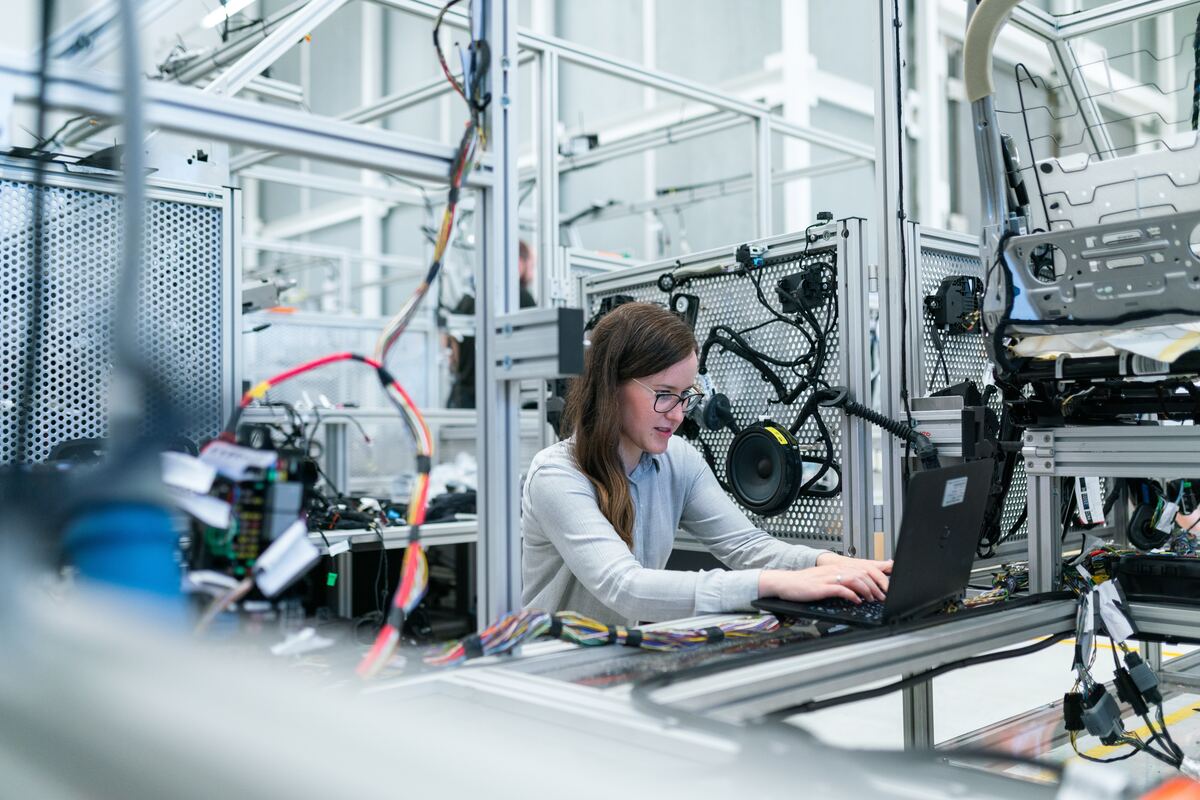
Benefits of IIoT
Beyond enhancing operational efficiency, the Industrial Internet of Things offers numerous benefits by utilizing the combined strength of artificial intelligence and internet-connected devices.
1. Regulatory Compliance
For organizations, managing regulatory compliance can be challenging. By providing continuous monitoring of critical factors, such as pollution levels and waste disposal in production, that assist in meeting environmental and safety standards, IIoT helps streamline compliance management.
Through secure, encrypted patient data transmission, the Industrial Internet of Things assists in certifying HIPAA compliance in the healthcare industry. Real-time, automated data collecting can reduce human error, enable proactive problem detection and response, save resources, and protect companies from penalties and reputational harm.
2. Digital Workforce Efficiency
By providing staff with a digital infrastructure, departments may communicate more easily and collaborate more effectively. Real-time data availability also facilitates prompt decision-making.
Precision training with augmented reality (AR) and virtual reality (VR) powered by IIoT can be used by the industrial and automotive industries to reduce errors. Industrial Internet of Things devices with predictive maintenance capabilities also avoid unplanned equipment breakdowns, which minimizes work delays.
3. Product Quality
Manufacturers have a big chance to improve quality assurance and control using IIoT. Industrial Internet of Things sensors can be used to monitor temperature and pressure in real-time production processes, allowing for prompt remedial action in the event of any quality violations.
Businesses can minimize costs by reducing defects, increasing customer happiness, streamlining operations, and anticipating possible quality concerns with the use of predictive analytics provided by the Industrial Internet of Things. Real-time quality control is extremely important for product success and can have a significant impact on a company’s financial performance and reputation, particularly in industries like automotive IoT.
4. Remote Condition Monitoring
Businesses may monitor the functioning of their equipment in real-time by using the Industrial Internet of Things to provide remote condition monitoring. Any anomalies or variations, like variations in temperature or vibration, can be quickly found and fixed.
With the ability for shipping companies to monitor and modify cargo conditions to minimize rotting, this technology is revolutionary in the transportation and logistics sectors. Similar to this, smart grids in energy management employ the Industrial Internet of Things to monitor components, lowering the chance of equipment failure and service interruptions while increasing the lifespan and financial savings of the equipment.
5. Real-time Data Collection & Processing
By gathering and evaluating real-time data from industrial operations, industrial IoT improves data-driven decision-making by offering comprehensive insights into product behavior, process efficiency, and equipment performance. Artificial intelligence and machine learning are used in the processing and analysis of this data to find patterns, forecast trends, and produce useful insights. Long-term corporate success can be attained through real-time data gathering and processing, which can improve operational efficiency, enable continuous improvement, and foster a deeper understanding of business operations.
6. Worker Safety
In dangerous industries like manufacturing, mining, or construction, IIoT greatly improves worker safety. Wearable Industrial Internet of Things devices provide real-time preventative alerts by monitoring workers’ vital signs and exposure to hazardous environments. For prompt maintenance and accident avoidance, thermal imaging can identify electrical problems or overheating machinery. IIoT also makes remote workers safer by facilitating quick emergency response through real-time tracking and communication. Thus, IIoT reduces operational disruptions to increase overall business productivity and efficiency while also ensuring worker safety.
7. Predictive Quality & Maintenance
IIoT can forecast malfunctions, plan maintenance, and gather real-time data to track product characteristics and spot possible quality problems like temperature or humidity variations. All of these features are made possible by advanced analytics and artificial intelligence. The goal of predictive maintenance is to minimize expenses and downtime by anticipating equipment wear and tear and scheduling maintenance during off-peak hours. Industrial Internet of Things predictive capabilities are improving product and process standards, streamlining operations, cutting costs, and moving industries from a reactive to a proactive mindset.
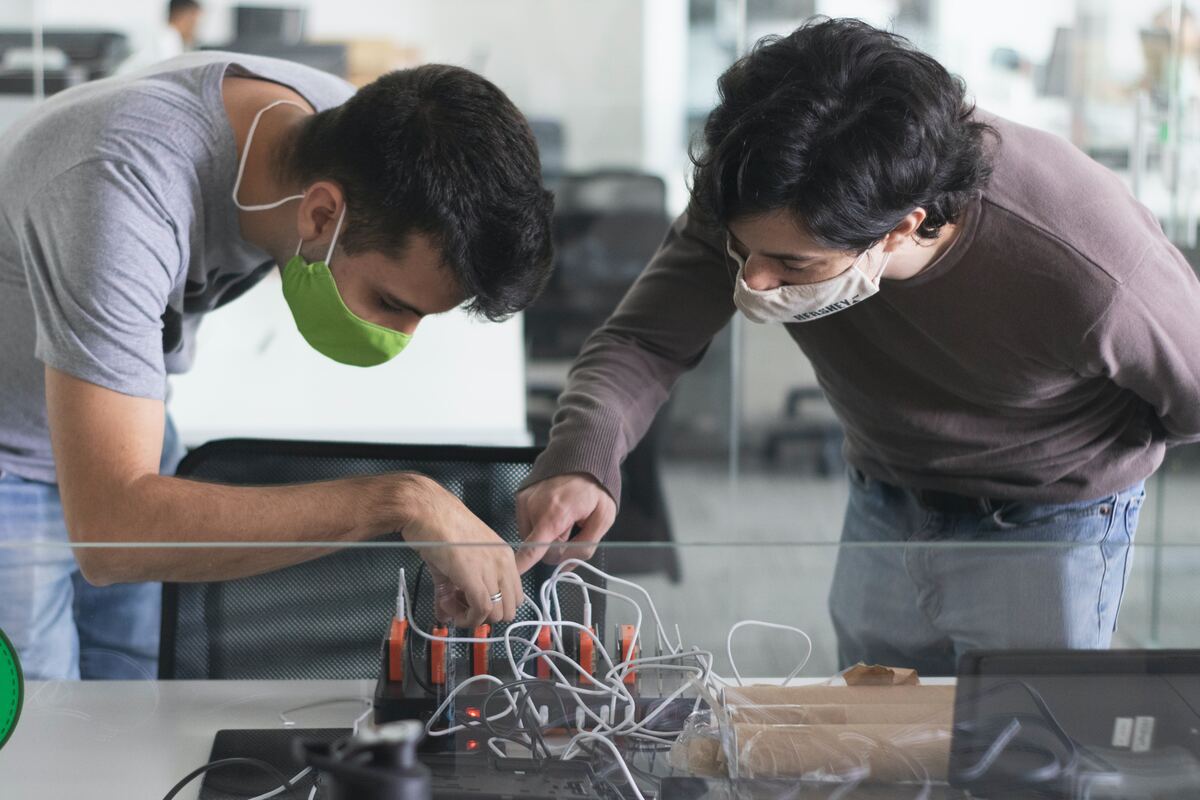
Industrial Internet of Things Limitations
Even though IIoT has many advantages, it’s important to realize that it also has drawbacks. Businesses face several obstacles as they expand their use of the Industrial Internet of Things, which may hinder the efficient application of this technology.
Let’s examine these difficulties in more detail:
- Security and Privacy Concerns: An increase in linked devices means an increase in potential points of entry for cyberattacks and difficulties with data protection. Strong security measures like data encryption, safe user authentication, and frequent system updates are investments that businesses must make. To ensure a secure network for Industrial Internet of Things devices, ZeroTier, for instance, uses sophisticated encryption and secure protocols to overcome these issues.
- High Initial Costs: Putting Industrial Internet of Things technologies into practice can be expensive. It covers the cost of sensors and devices, the capacity for processing and storing data, and the potential for hiring new employees or providing training for current employees.
- Need for Skilled Workforce: The IIoT generates enormous volumes of data, which need trained personnel to manage and comprehend. Professionals with experience in data analysis, machine learning, and related subjects are in high demand.
- Integration Challenges: Integrating Industrial Internet of Things technology with current systems and procedures is a challenge for many firms. This could lead to a disorganized and ineffective operation. On the other hand, IIoT device connectivity software, such as ZeroTier, can offer platforms that work with different devices, making integration easier.
- Infrastructure Limitations: IIoT solution installation may be hampered in some areas by poor infrastructure and restricted internet access.
- Regulatory Challenges: Businesses may encounter legislative obstacles around data security, privacy, and utilization, contingent on their industry and geographic location.
Notwithstanding these difficulties, IIoT has significantly more potential advantages for enterprises and society overall than disadvantages. Businesses may effectively manage these obstacles and realize the full potential of IIoT with the correct tools and a strategic approach.
How to Connect Your Industrial Internet of Things Devices
Using IIoT devices in your industrial operations is a strategic process that needs the appropriate software and careful planning. Establishing a safe, dependable, and effective system that collects and analyzes data with ease and provides insightful information to advance your company’s operations is the aim.
One of the best platforms for setting up safe networks for your IoT devices is called ZeroTier. It makes the process of connecting your devices easier by establishing a private, worldwide network via the internet. ZeroTier makes sure your devices are always and securely linked, even when they are dispersed across multiple locations.
The process of implementation is simple:
- Installation: On your devices, install the ZeroTier program.
- Join Network: Every device gets its address and can be connected to your personal ZeroTier network.
- Manage Devices: You may monitor, control, and even set up network rules for your devices using the ZeroTier central interface.
You don’t need to bother about the difficult process of setting up firewalls or VPNs when you use ZeroTier. It enables you to fully utilize the industrial internet and propel the digital transformation of your company by making the Industrial Internet of Things device connections easy, safe, and affordable.
What is the Difference Between IoT and IIoT?
While cloud platforms, sensors, networking, machine-to-machine communications, and data analytics are among the many technologies that the Internet of Things and IIoT share, their applications differ.
Devices from several verticals, such as agriculture, healthcare, business, consumer, utilities, government, and cities, are connected by IoT systems. IoT technology comprises fitness bands, smart devices, and other applications that, unless anything goes wrong, usually don’t result in emergencies.
Conversely, IIoT applications link equipment and machinery in industries including manufacturing, utilities, and oil and gas. In Industrial Internet of Things implementations, system malfunctions, and outages may put users in dangerous or even fatal situations. Compared to IoT applications, which are primarily focused on the user, Industrial Internet of Things applications are more concerned with enhancing efficiency, health, or safety.
IoT typically relates to consumer-level electronics, such as wearables and smart home products. Conversely, IIoT is concentrated on industrial uses.
What is Industrial IoT Architecture?
The framework that describes the interactions between different IIoT components, such as sensors, devices, networks, and applications, is known as industrial IoT architecture. An Industrial Internet of Things architecture typically consists of four layers:
- Edge Layer: The actuators, sensors, and physical devices are located here. They take action and gather information.
- Communication Layer: Data transfer from the edge layer to the processing layer is managed by this layer.
- Data Processing and Analytics Layer: This is where the gathered data is processed, examined, and kept safe. This layer can use artificial intelligence for advanced analytics and frequently makes use of cloud computing.
- Application Layer: This is the layer that is visible to users and provides useful insights. Automation controls, alarms, and dashboards are some examples of it.
The objective is always to enable safe and effective data transfer from the real world to the digital and vice versa. The architecture can change depending on particular needs.
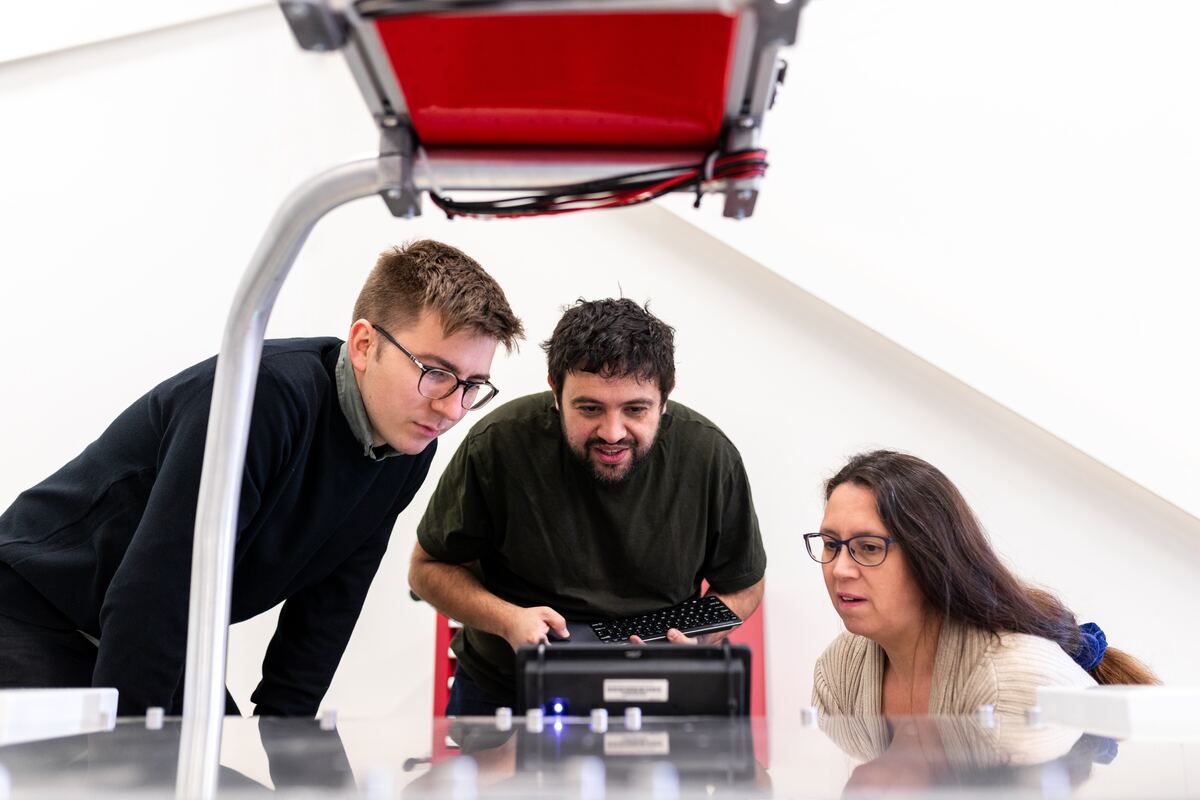
Security Considerations and Challenges When Adopting IIoT
Industries can be revolutionized by the Industrial Internet of Things adoption, but more security risks may arise from this greater connectedness. Businesses that use operational technologies are aware of how critical worker safety and product quality are. However, as operations, the internet, automation, and smart devices are integrated, several availability, scalability, and security issues occur.
Because availability and scalability are essential to most industries’ operations and are simple to include in Industrial Internet of Things systems, most sectors have experience with managing them. Most firms make mistakes when it comes to security. End-to-end security and integration can be made more difficult by new technology, yet many firms continue to use outdated systems and procedures.
As smart gadgets become more common, especially those used by employees for work, several security flaws arise. Organizations are in charge of setting up and securely implementing any linked devices. However, it is not always the case that gadget manufacturers can demonstrate that their products are safe.
Problems with cyber-security are growing. Hackers with success can break into linked systems and possibly stop operations. Manufacturing organizations must approach the Industrial Internet of Things like any other IT company to address these security concerns, concentrating on the security of both digital and physical components.
Securing the integration of industrial activities with IT is another challenge in the deployment of the Industrial Internet of Things. User data must comply with international privacy laws. Compiling data is necessary to produce critical insights for an organization, but private data must be kept apart and in secured databases. Storing personal information alongside corporate information carries significant exposure hazards.
IIoT has several more security-related issues. This could be due to outdated apps being used, open ports, or insufficient authentication procedures. Businesses may be at risk from all these little issues in addition to having an internet network. Industrial Internet of Things systems that are not secure might cause financial losses as well as operational disruptions.
The hazards to security increase with an environment’s level of connectivity:
- Hackers can easily target software flaws.
- Systems and devices with internet access can be searched by the general public.
- A rise in hacking attempts results in more focused attacks and lost data.
- Attempts at sabotage or system manipulation cause disruptions to operations.
- A malfunctioning system can cause damage to the gadget or, worse, injury to the workers themselves.
- extortion attempts brought on by operating technology that have been hacked.
- Higher penalties for violating regulations and disclosing private information.
The final issue is the fragmentation of technology that affects IIoT and IoT, which can result in unworkable systems if procedures are not followed correctly or effectively.
How Companies Can Implement Industrial Internet of Things Intelligently?
The Industrial Internet of Things is still the way forward for businesses to be relevant and competitive despite all of these worries. Businesses that use methodical research, implementation, and maintenance can fully reap the benefits of it.
Undoubtedly, one important issue to concentrate on is cyber-security. Any organization that connects its operational technologies to the internet is exposed. All of IIoT’s potential can be undermined by a lack of security, exposing a company to extreme danger. In important areas, security design is required:
A Centralized Security Operations Centre
A security operations center (SOC) is a requirement for every business interested in using the Industrial Internet of Things. This will keep an eye out for and proactively defend against a wide range of dangers. A centralized setup guarantees prompt answers and enables businesses to address multiple red flags. Organizations that need more visibility and continuous analysis of their security posture should use these centers. Preventing security events in advance is essential to avoiding compromise. By using this method, businesses can modernize and enhance their legacy systems.
Slow reaction times and poor system visibility can also be addressed by a SOC. By handling and prioritizing warnings, a security operations center maximizes the use of operational and IT technology.
Recruiting Security Experts to Mitigate Threats
Organizations must adjust to new risks as the IT threat landscape is ever-changing, just like any other technology-based area. To get ready, businesses implementing the Industrial Internet of Things must establish a specialized security team that is always focused on safeguarding operational technological environments. This is a specialist field that calls for professionals. Together, these IT security professionals can forecast the next potential assault and implement countermeasures to make sure it doesn’t occur.
Full-Stack Protection
The fundamental IIoT layers must incorporate a full stack of security measures:
The Device: The IIoT devices and related apps from different manufacturers and service providers make up this layer. Adopters of the Industrial Internet of Things should be aware of how suppliers and manufacturers handle, transfer, and keep data. Manufacturers and service providers need to be able to alert businesses right away if there is a security breach.
The Network: Device data is collected via a gateway located within the network region. Modern intrusion prevention systems (IPSs) are necessary for organizations to safeguard against possible threats. The control center is where this gateway is located, and it sends commands to other devices. The control center must implement security measures to guard against hackers and malware attacks.
The Cloud: To prevent hackers from trying to take over servers and data, providers must have security that uses server-based protection.
To put it succinctly, end-to-end protection systems and interconnected threat defenses are necessary for Industrial Internet of Things security. These frameworks ought to:
- Continue to keep an eye out for malware infections.
- Early detection of threats and abnormalities allows for the proactive prevention of attacks and threats between operational and IT systems.
- Assure safe data transmissions.
- To stop vulnerabilities, use a sophisticated intrusion prevention system.
- Make sure the data center and cloud are protected for servers and applications.
When used in conjunction with digital transformation initiatives, IIoT is recognized for its ability to facilitate speedier and more intelligent decision-making. Through the secure storage of precise, real-time data, IIoT improves enterprise comprehension of business operations. Industrial Internet of Things evaluates data from various sensors to improve process efficiency and provide new income opportunities. Businesses may improve coordination and collaboration by gaining a deeper understanding of every facet of their supply chain.
IIoT is still relatively young, despite all these advantages. Some IIoT-using technologies, such as 5G networks, are too costly to be widely implemented right now. While the adoption of IIoT will take time to reach its full potential, businesses that actively and strategically pursue a digital future stand to gain.
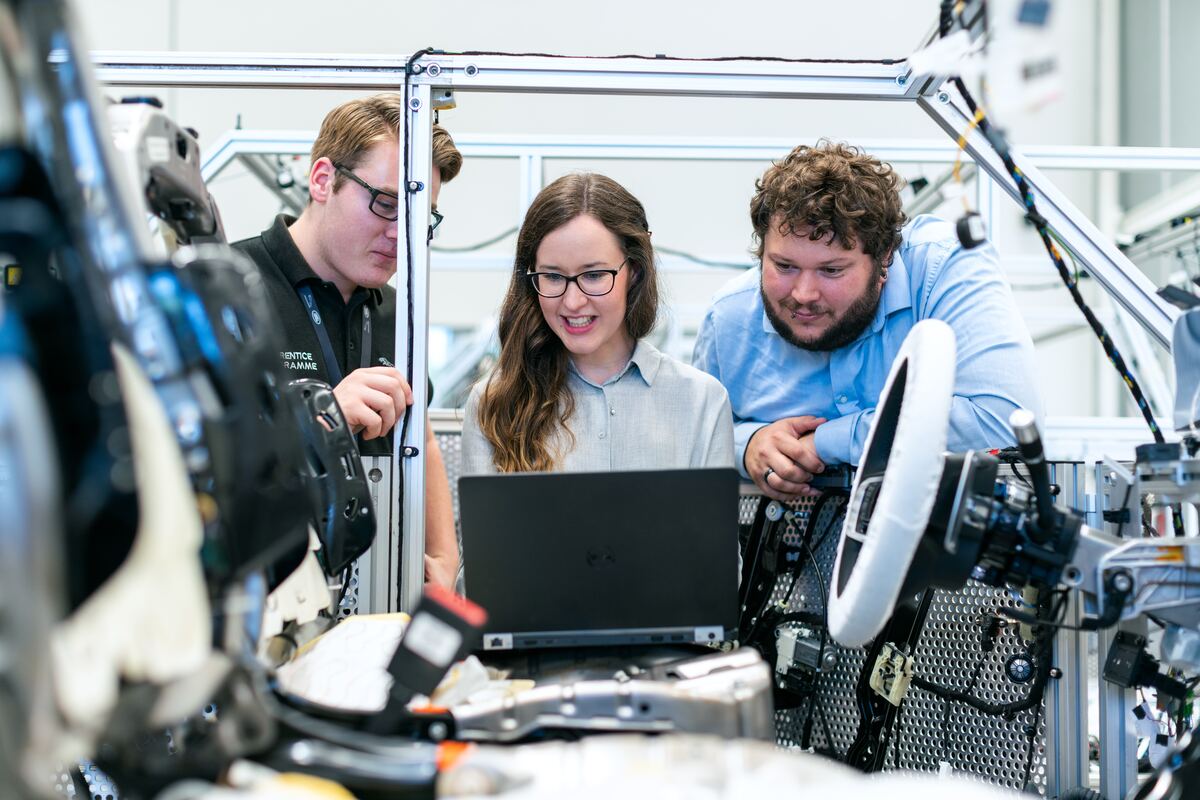
Emerging Trends in Industrial IoT
The Emergence of Wireless Technologies: The link between machines, industrial equipment, and applications is the main focus of the Industrial Internet of Things. The IIoT’s connectivity has improved thanks to 5G, allowing for faster, more reliable data communication as well as more security to enable certain crucial processes.
The Increased Usage of AI and ML: AI has been revolutionizing the Industrial Internet of Things (IIoT) space in recent years, and businesses are reaping the rewards of doing so. Getting the correct data collected, cleaned, and processed is one of the most crucial parts of artificial intelligence. In addition, businesses are increasingly utilizing Edge AI, which processes data from the same location and stores, processes, and manages it at Internet of Things (IoT) endpoints. This facilitates the Management’s ability to make timely, well-informed decisions. The growing application of ML (machine learning), which involves feeding data from a corresponding process or device to an AI system, will benefit AI.
Increase in Industrial Automation: In industries, automation not only helps to increase productivity and save time, but it also helps to minimize the need for human intervention. Errors can be avoided when human intervention is reduced. In addition, in light of the COVID-19 epidemic and social distance, enterprises are concentrating more of their investments in industrial automation in an effort to reduce the number of operators.
Predictive Maintenance: In the context of the Industrial Internet of Things, predictive maintenance works to prevent asset failure by evaluating data and anticipating problems before they arise. Real-time alarms, asset nature analysis, uptime enhancement, and general productivity are all aided by it. Scheduled maintenance was once utilized by manufacturers to avoid downtime.
Remote Monitoring and Operations: You can operate and keep an eye on equipment remotely at any time and from any location. This facilitates wise decision-making based on current information, regardless of the location of the individuals.
Challenges in Present and Future Industrial Internet of Things
Cybersecurity Risks: Cybersecurity threats are increasing along with the IIoT. Cybersecurity breaches of any kind endanger not just private information but also output. Performing risk assessments on an Industrial Internet of Things device regularly is essential.
Data Analysis: Massive volumes of data are produced by IIoT devices like gateways, actuators, sensors, and linked devices. Making wise decisions requires timely data organization and processing.
Connectivity: One of the most important components of success is connectivity between the devices and equipment. Selecting the appropriate communication technology is essential to guarantee uninterrupted data transfer between systems and equipment.
Conclusion: What is the Future of the Industrial Internet of Things?
The Industrial Internet of Things’ future is closely related to the Industry 4.0 movement. The fourth Industrial Revolution is essentially what Industry 4.0 represents. The first industrial revolution, known as Industry 1.0, started in the late 1700s when businesses started using steam- or water-powered machinery for manufacturing. With the invention of electricity and assembly lines at the start of the 20th century, Industry 2.0 was born. The use of computers in the manufacturing process was a key component of Industry 3.0, which emerged in the later half of the 20th century.
The foundation of modern Industry 4.0 is the incorporation of more recent technologies into business processes and manufacturing facilities. Cloud computing, AI, machine learning, and the usage of linked electronics—especially IIoT devices—are some of these more recent technologies.
IIoT devices will be crucial to digital transformations in the future, particularly as businesses try to automate their supply chains and production lines. Furthermore, Industrial Internet of Things data will be incorporated into big data analytics as it develops, enabling businesses to recognize changing circumstances instantly and take appropriate action.
Even though IIoT devices have been available for a while, their actual use is constantly expanding. As per a Research and Markets analysis, the worldwide Industrial Internet of Things market was valued at $221.7 billion in 2022 and is expected to reach $516.6 billion by 2028. In a similar vein, IIoT development as a service is expected to gain popularity. You may learn more about IIoT and its applications.
Suggested articles to read:
The Ultimate Guide to IoT Sensor in 2024
Smart Construction: Top 7 IoT Applications
Resources:
SAP | Cisco | General Electric | Solwit | Moxa | TechTarget | CopaData
For all the pictures: Freepik | Unsplash





